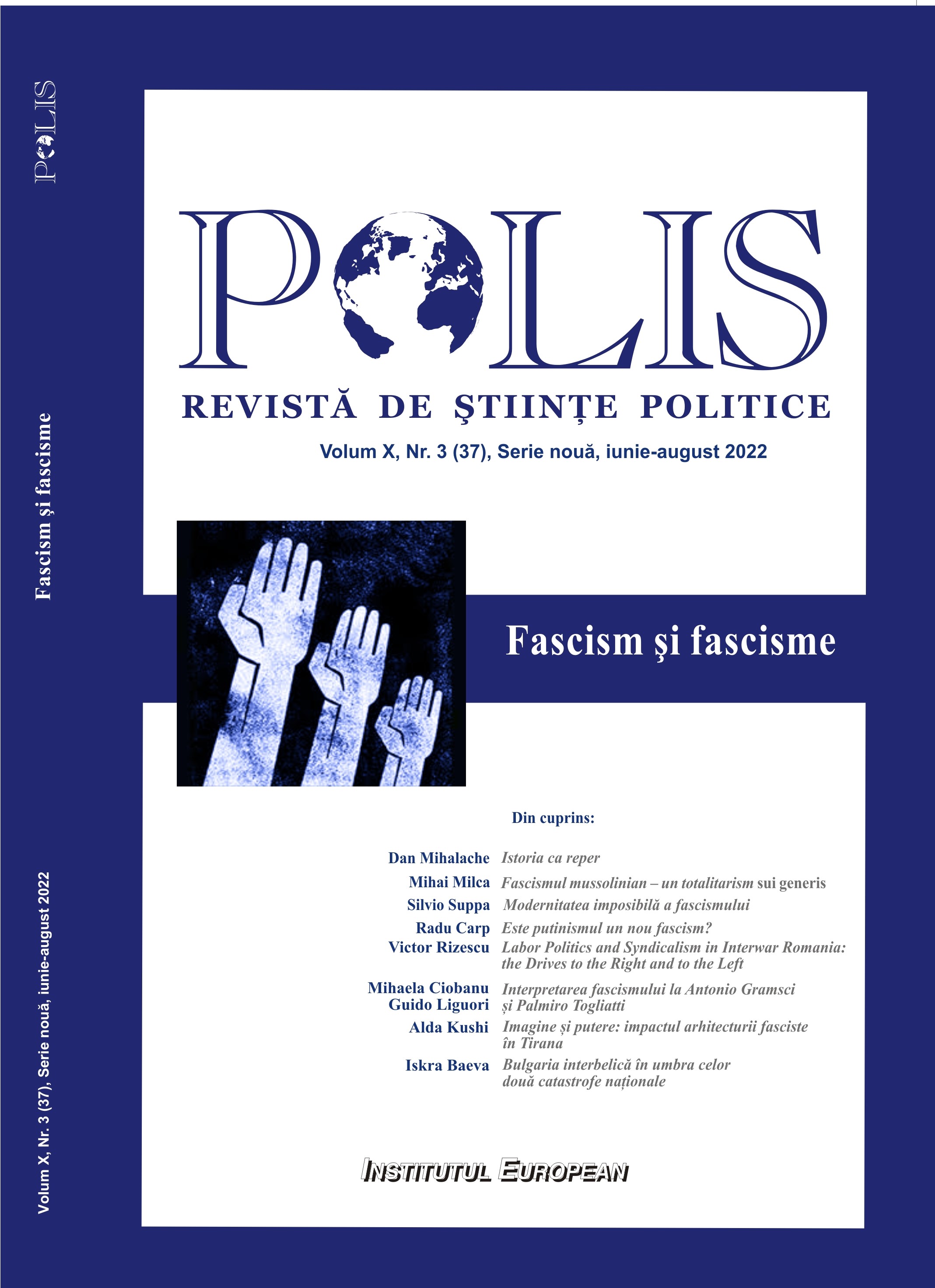Interpretarea fascismului la Antonio Gramsci și Palmiro Togliatti
The interpretation of fascism at Antonio Gramsci and Palmiro Togliatti
Author(s): Mihaela Ciobanu, Guido LiguoriSubject(s): Politics / Political Sciences, Politics, Interwar Period (1920 - 1939), History of Communism, Fascism, Nazism and WW II
Published by: Editura Institutul European
Keywords: Gramsci; Togliatti; Fascism; Communism; Passive Revolution;
Summary/Abstract: The present article examines the analysis that Gramsci and Togliatti develop in their interpretation of fascism, with the aim of comprehending the peculiar characteristics of fascism in depth. The article examines Gramsci’s entire political and intellectual journey, focusing on the analysis of fascism developed from the 1920s until his imprisonment and delivered in the Prison Notebooks of the 1930s. For Gramsci, the phenomenon of fascism is part of the peculiarity of Italian history. As early as 1921 he stated that ‘against the advance of the working class there will be a coalition of all reactionary elements from fascists to popular to socialists’. Togliatti was among the few, along with Gramsci, who understood that fascism was not simply an empty appearance a «fog that melts in the first-morning sun» as Croce stated, but had a social and economic basis of its own, and would not easily be defeated. Togliatti noted that, unlike the old reactionary movements that appealed to the privileged few, fascism actually appealed to the masses and could therefore be called a «mass reactionary movement»
Journal: Polis. Journal of Political Science
- Issue Year: X/2022
- Issue No: 3 (37)
- Page Range: 105-117
- Page Count: 10
- Language: Romanian

